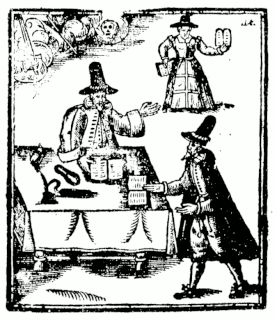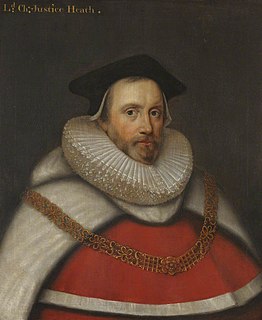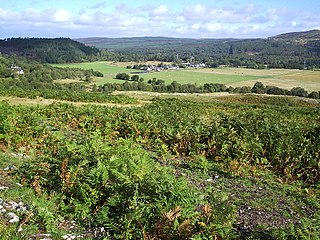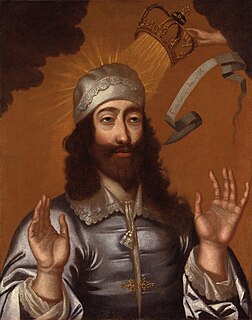Related Research Articles

The Levellers were a political movement during the English Civil War (1642–1651) committed to popular sovereignty, extended suffrage, equality before the law and religious tolerance. The hallmark of Leveller thought was its populism, as shown by its emphasis on equal natural rights, and their practice of reaching the public through pamphlets, petitions and vocal appeals to the crowd.

1649 (MDCXLIX) was a common year starting on Friday of the Gregorian calendar and a common year starting on Monday of the Julian calendar, the 1649th year of the Common Era (CE) and Anno Domini (AD) designations, the 649th year of the 2nd millennium, the 49th year of the 17th century, and the 10th and last year of the 1640s decade. As of the start of 1649, the Gregorian calendar was 10 days ahead of the Julian calendar, which remained in localized use until 1923.

The Restoration of the Stuart monarchy in the kingdoms of England, Scotland and Ireland took place in 1660 when King Charles II returned from exile in continental Europe. The preceding period of the Protectorate and the civil wars came to be known as the Interregnum (1649–1660).
Regicide is the purposeful killing of a monarch or sovereign of a polity and is often associated with the usurpation of power. A regicide can also be the person responsible for the killing. The word comes from the Latin roots of regis and cida (cidium), meaning "of monarch" and "killer" respectively.

William Cavendish, 1st Duke of Newcastle upon Tyne, KG, KB, PC was an English courtier and supporter of the arts. He was a renowned horse breeder, as well as being patron of the playwright Ben Jonson, and the intellectual group known as the Welbeck Circle.

The Rump Parliament was the English Parliament after Colonel Thomas Pride purged the Long Parliament, on 6 December 1648, of those members hostile to the Grandees' intention to try King Charles I for high treason.

Richard Brandon was the common executioner of London from 1639 to 1649, who inherited his role from his father Gregory Brandon and was sometimes known as Young Gregory. Richard Brandon is often named as the executioner of Charles I, though the executioner's identity is not definitely known.

Sir Robert Heath was an English judge and politician who sat in the House of Commons from 1621 to 1625.

The English Council of State, later also known as the Protector's Privy Council, was first appointed by the Rump Parliament on 14 February 1649 after the execution of King Charles I.

William Stone, 3rd Proprietary Governor of Province of Maryland was an early, English settler in Maryland. He was governor of the colony of Maryland from 1649 to 1655.

The Governor of Bermuda is the representative of the British monarch in the British overseas territory of Bermuda.

The Battle of Carbisdale took place close to the village of Culrain, Sutherland, Scotland on 27 April 1650 and was part of the Wars of the Three Kingdoms. It was fought by the Royalist leader James Graham, 1st Marquess of Montrose, against the Scottish Government of the time, dominated by Archibald Campbell, 1st Marquess of Argyll and a grouping of radical Covenanters, known as the Kirk Party. The Covenanters decisively defeated the Royalists. The battlefield has been inventoried and protected by Historic Scotland under the Scottish Historical Environment Policy of 2009. Although Carbisdale is the name of the nearest farm to the site of the battle, Culrain is the nearest village.

The execution of Charles I by beheading occurred on Tuesday 30 January 1649 outside the Banqueting House on Whitehall. The execution was the culmination of political and military conflicts between the royalists and the parliamentarians in England during the English Civil War, leading to the capture and trial of Charles I. On Saturday 27 January 1649, the parliamentarian High Court of Justice had declared Charles guilty of attempting to "uphold in himself an unlimited and tyrannical power to rule according to his will, and to overthrow the rights and liberties of the people" and he was sentenced to death.
William Hewlett may refer to:

The High Court of Justice was the court established by the Rump Parliament to try Charles I, King of England, Scotland and Ireland. Even though this was an ad hoc tribunal that was specifically created for the purpose of trying the king, its name was eventually used by the government as a designation for subsequent courts.

King Charles the Martyr, or Charles, King and Martyr, is a title of Charles I, who was King of England, Scotland and Ireland from 1625 until his execution on 30 January 1649. The title is used by high church Anglicans who regard Charles's execution as a martyrdom. His feast day in the Anglican calendar of saints is 30 January, the anniversary of his execution in 1649. The cult of Charles the Martyr was historically popular with Tories. The observance was one of several "state services" removed in 1859 from the Book of Common Prayer of the Church of England and the Church of Ireland. There remain some churches and parishes dedicated to Charles the Martyr, and his cult is maintained by some Anglo-Catholic societies, including the Society of King Charles the Martyr founded in 1894 and the Royal Martyr Church Union founded in 1906.
The regnal years of English monarchs are the official regnal years of the monarchs of the Kingdom of England from 1066, the Kingdom of Great Britain from May 1707 to January 1801, and the United Kingdom since January 1801. The regnal calendar continues to be used in many official British government and legal documents of historical interest, notably parliamentary statutes.

The interregnum in the British Isles began with the execution of Charles I in January 1649 and ended in May 1660 when his son Charles II was restored to the thrones of the three realms, although he had been already acclaimed king in Scotland since 1649.

The Resident Commissioner at Portsmouth also known as the Resident Commissioner of the Navy at Portsmouth was the chief representative of the Navy Board based at Portsmouth Dockyard. He was senior official of the yard responsible for the supervision of the principal officers of the yard from 1649 until 1829. In 1832 this office was superseded by the Admiral-Superintendent, Portsmouth.
References
- ↑ Hewlett Genealogy sourced from a book by the Reverend William King (Vicar of Astley 1947–1973), titled "Bells and Pomegranates"